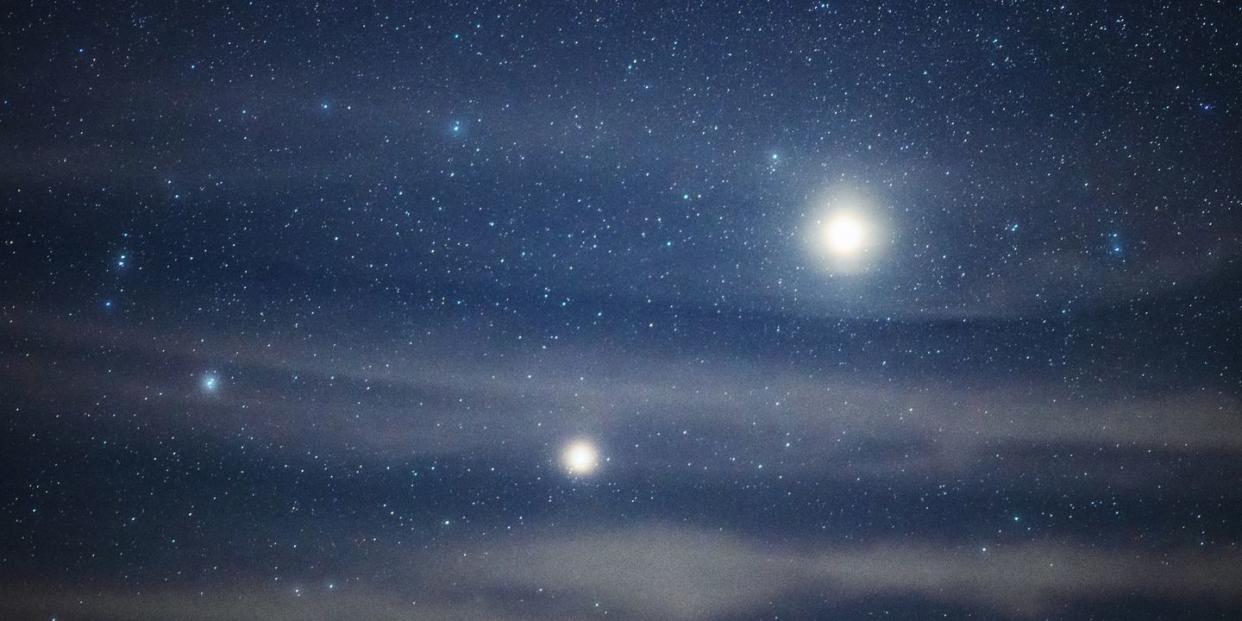Jupiter and Saturn Will Form an Ultra-Rare ‘Double Planet’ Tonight

A rare “Great Conjunction” between Jupiter and Saturn will occur about an hour after sunset on Dec. 21.
Nearly everyone in the world will be able to see the “kissing planets” with the naked eye.
The planets meet only once every 20 years—and this is the first time such a close conjunction will be visible at night in nearly 800 years.
December 2020 has been kind to stargazers. Although this month’s total solar eclipse and the Geminids meteor shower have wrapped up, there’s an even greater cosmic event to catch: an ultra-rare “Great Conjunction” between Jupiter and Saturn just days before Christmas.
The so-called kissing planets will be visible after sunset on Dec. 21. Monday also happens to be the winter solstice, or the shortest day of the year, meaning you’ll have the longest possible viewing window for the Jupiter-Saturn “double planet.”
To catch a glimpse of the alignment, look to the southwestern sky about an hour after sunset, according to NASA. Both planets will be visible to the naked eye, but binoculars or a telescope will help you get a better view of the pair. And because the convergence will happen at night, nearly everyone in the world will be able to catch a glimpse of the planets.

You’ll probably spot Jupiter, the brightest of the pair, first. Saturn will appear slightly above and to the left of Jupiter. After that, sit back and watch as the planets appear to converge, then go their separate ways—the only time you can catch this show until November 2040.
From Earth’s perspective, the planets will be only a tenth of a degree apart, NASA reports. In reality, Jupiter and Saturn will be about 450 million miles apart.
The Great Conjunction occurs every 20 years, but the viewing conditions aren’t always this optimal; at the last Jupiter-Saturn touch in 2000, for example, the planets appeared close to the sun, making them difficult to see, per EarthSky. They don’t always overlap with such a small degree of separation, either.
This year’s double planet will be a once-in-a-lifetime viewing opportunity. The last time Jupiter and Saturn converged so closely was in 1623—just under 400 years ago, according to the Griffith Observatory. And the last time they converged this closely at night was an extra 400 years ago, way back in 1226.
So yeah, you might not want to miss this one!
Go here to join Prevention Premium (our best value, all-access plan), subscribe to the magazine, or get digital-only access.
You Might Also Like